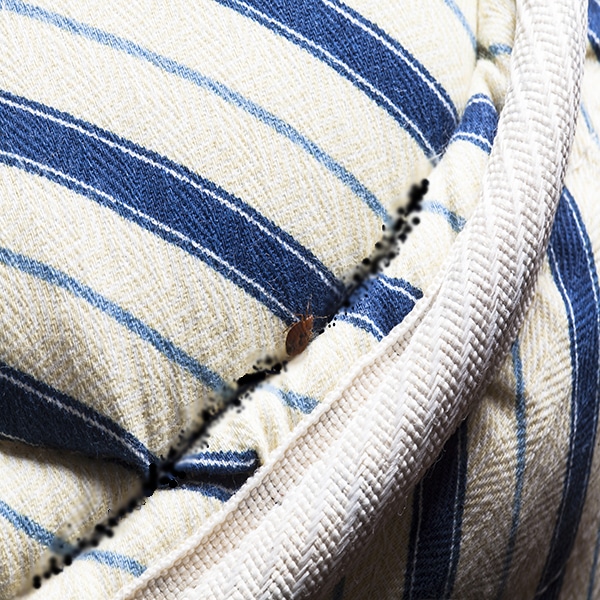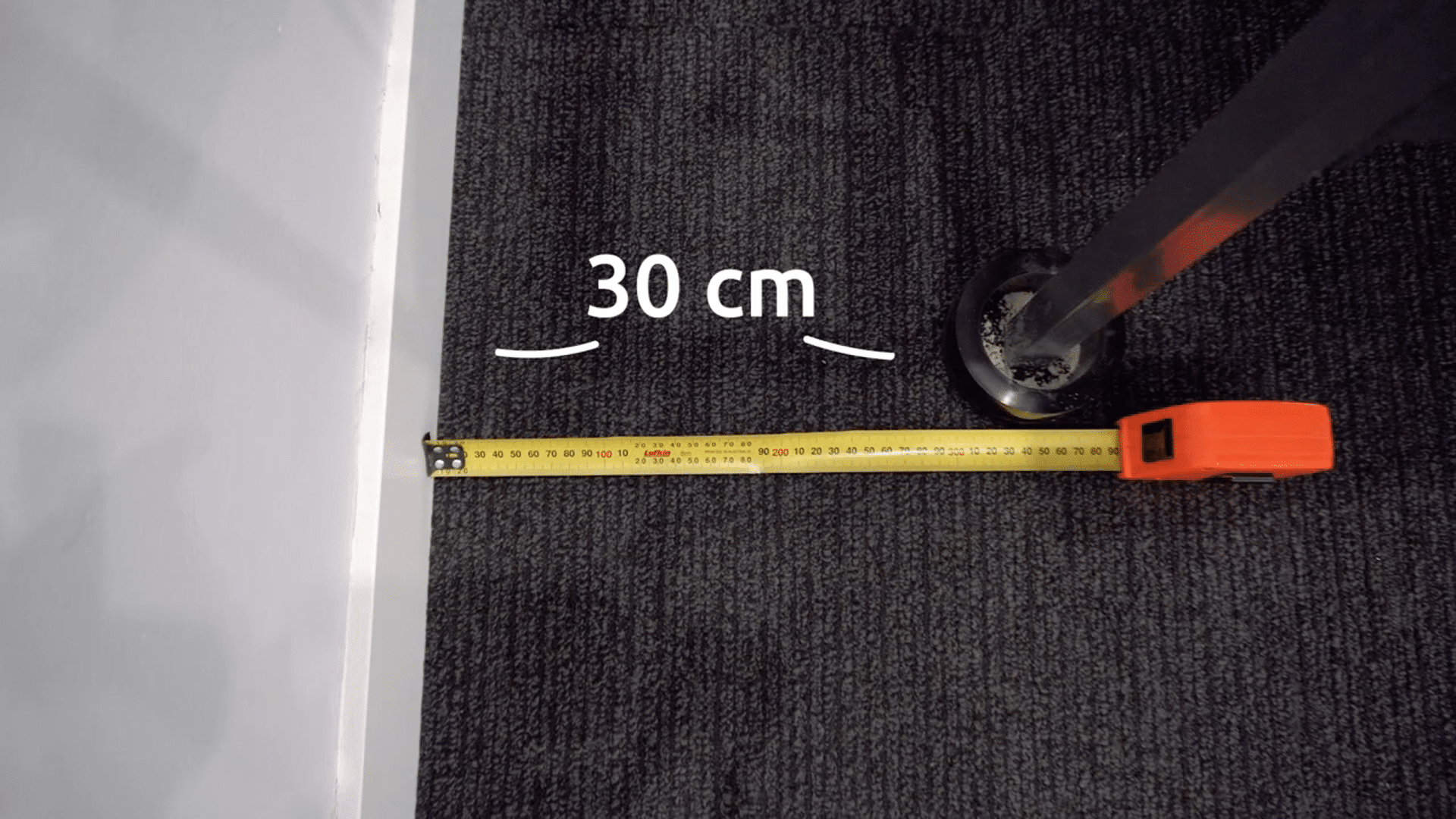
In the article
Last Updated on 30/09/2025 by Tony Abrahams
TL;DR
- Check mattresses, bases, seams, bed frames, and headboards – their favourite hiding spots.
- Look for small rust-coloured stains, shed skins, and tiny white eggs.
- Use a flashlight and magnifying glass to spot them in dark crevices.
- Inspect luggage and secondhand furniture – common ways infestations spread.
It’s actually easy if you know where to look. Bed bugs are experts at hiding, and waiting until bites appear often means the problem is already spreading. The good news is that learning how do you find bed bugs early gives you the chance to stop them before they take over. In this guide, we’ll show you exactly how to find them at home, in hotels, and even in public spaces, before a few stray bugs turn into a full-blown infestation.
How Do You Find Bed Bugs: The Most Common Hiding Places

Bed bug poo in mattress seams is a strong indicator that you have bed bugs
These nocturnal bugs prefer dark, hidden spots close to their food source – you! Understanding bed bug hiding places is essential in detection.
- Bedroom and Sleeping Areas: The most common spots are around the bed, specifically the seams of the mattress, bed frames, headboards, and bedside tables. They also hide behind wall fixtures, within electrical outlets, and under loose wallpaper.
- Upholstered Furniture: Sofas, armchairs, and other upholstered furniture, especially those regularly napped on, are ideal hiding spots.
- Carpets and Rugs: The edges of carpets and rugs, particularly those near sleeping areas, often harbour the bugs.
- Clothing and Luggage: These critters can hide in the folds and pockets of clothing and luggage, especially if stored near sleeping areas or frequently used for travel.
- Behind Wall Hangings and Picture Frames: The pests often live behind pictures, posters, and other wall hangings, especially when near beds or resting areas.
- Cracks and Crevices: Any small crack or crevice in walls, flooring, or furniture can serve as a hiding place.
When inspecting, use a flashlight and a magnifying glass for examination, paying close attention to seams, folds, and crevices.
Signs and Symptoms of Bed Bugs

If you have bed bugs, you’ll find exoskeletons, poo, and eggs
When answering the question, “How do you find bed bugs?”, it’s crucial to be aware of signs and symptoms they leave behind. These bugs are small and difficult to spot but also leave behind distinct clues.
Physical Signs of Bed Bugs:
- Small Blood Stains: These stains, often found on bedding or mattresses, are caused by bugs being crushed.
- Tiny White Eggs: Their eggs are about the size of a pinhead, pearl-white, and generally found clustered in their hiding places.
- Live Bed Bugs: Adult bugs are small (think apple seed-sized), flat, and oval-shaped, with a reddish-brown color.
- Exoskeletons & Poo: As the bugs grow, they shed their skin and poo, leaving shells and black stains around their hiding spots.
- Bite Marks: Red, itchy welts on exposed skin, often in lines or clusters, can be a telltale sign of bed bug activity.
- Distinctive Odour: A heavy infestation can produce a musty, sweet odour caused by their scent glands.
Bed Bug Bites in Australia: How to Find, Treat and Prevent Bed Bugs Fast
How to Get Rid of Bed Bugs

Bed Bug Isolation Method
Once you’ve found signs of bed bugs, the next step is eliminating them. While many people turn to pest controllers, the reality is that chemical sprays and repeat service calls are expensive, inconvenient, and often only a temporary fix. A smarter approach is the Isolation Method, a proven DIY system that cuts off the bugs at their source and keeps them from coming back.
Why the Isolation Method Works Better:
- Immediate Relief: By isolating the bed with barriers and traps, you stop bed bugs from climbing onto you at night. You can literally sleep in your bed the same night you set it up.
- Long-Term Protection: Adding Diatomaceous Earth (DE) powder around bed legs and frames means every bug is forced to walk across it, leading to their death. Unlike sprays, this protection lasts for years.
- Safe and Non-Toxic: The system uses steam, mattress covers, barriers, and DE, all eco-friendly and safe to use around kids and pets.
- Cheaper and Easier: Instead of paying hundreds or even thousands for multiple pest control visits, a one-time DIY setup saves you money, time, and stress.
How It Works:
- Secure your mattress and base with protective covers to trap existing bugs and stop new ones from getting inside.
- Use a steamer on the bed frame, furniture, and hiding spots to kill bugs instantly.
- Dust Diatomaceous Earth on the bed frame and inside Floor Barriers under each bed leg to ensure every bug crossing is killed.
- Isolate your bed and keep the bed 30 cm away from walls and furniture so the only access point is through your barriers.
The result? Every bed bug in the room is eventually drawn to you for a feed — but they can’t reach you without crossing the powder and dying. With this system, you’re not just treating the bed, you’re turning it into a controlled kill zone that wipes out the entire infestation.
Bottom line: The Isolation Method is easier, quicker, and more effective than relying on pest controllers. One setup gives you instant relief and long-term protection without chemicals or constant reapplications.
Bed Bug Prevention Strategies
Prevention is always easier than treatment. By taking a few simple steps, you can significantly reduce the chances of an infestation and avoid the stress of dealing with bed bugs later on.
- Travel Wisely: When staying in hotels or Airbnbs, inspect the room carefully for signs of bed bugs. Keep your luggage on racks instead of the floor or bed, and consider using luggage protectors. Once home, wash all clothing in hot water and vacuum out your suitcases before storing them.
- Mind Secondhand Items: Be cautious when bringing used furniture, clothing, or other items into your home. Inspect everything thoroughly, paying close attention to seams, cracks, and folds, and clean items before use.
- Bed Bug Proof Mattress Encasements: Invest in high-quality bed bug proof mattress covers. These not only trap any existing bugs inside but also prevent new infestations, while making inspection much easier.
- Dust the Bed Frame with DE: Applying a light layer of Diatomaceous Earth (DE) to the bed frame creates a lasting protective barrier. Any bug that tries to climb onto the bed will be killed as it crosses, providing years of non-toxic protection.
These strategies, when combined, create a strong defence system that makes it far less likely for bed bugs to take hold in your home.
FAQs: How Do You Find Bed Bugs
- Where do bed bugs usually hide?
Bed bugs prefer dark, hidden spaces close to where people sleep or rest. Common spots include mattress seams, bed frames, headboards, bedside tables, and even behind wall fixtures or inside electrical outlets. They can also be found in upholstered furniture, luggage, carpets, and cracks in walls or flooring. - What are the first signs of bed bugs?
Early signs include small rust-coloured stains on bedding, shed exoskeletons, tiny white eggs (about the size of a pinhead), and black spots of bed bug poo along seams and cracks. Some people also notice red, itchy bite marks on their arms, neck, or face after sleeping. - Can I find bed bugs with the naked eye?
Yes, adult bed bugs are visible to the naked eye. They are about the size of an apple seed, flat, oval-shaped, and reddish-brown in colour. Eggs and nymphs are harder to spot without a magnifying glass or good lighting, which is why tools like UV detection lights can help. - What is the best DIY method to find bed bugs?
Start with a flashlight and magnifying glass to check seams, folds, and cracks. Set up bed bug interceptor traps or barrier tape under bed legs to catch them as they move at night. A steamer can also expose hidden bugs by flushing them out of mattresses and furniture.
Conclusion: How Do You Find Bed Bugs Fast (and Stop Them)?
Finding bed bugs early is half the battle. Check the hotspots (mattress seams, bed frames, headboards), look for tell-tale signs (rust-coloured stains, shed skins, tiny eggs), and use simple tools, a flashlight, magnifying glass, and night-time interceptors, to confirm what’s really going on. From there, a clear DIY plan with steam, barriers, and encasements lets you take control quickly and safely.
- Inspect: Mattress seams, bed frames, headboards, bedside furniture.
- Confirm: Set interceptors/barrier tape under bed legs to catch night-time movement.
- Treat: Flush with steam, isolate the bed, and fit protective encasements.
- Prevent: Keep the bed isolated and monitor with traps for ongoing peace of mind.
If you’ve spotted signs, don’t panic, act. Our DIY system is designed to be simple, affordable, and effective the first time, without endless spray cycles or follow-up appointments.
For a deeper dive and step-by-step walkthroughs, explore more guides on the Bed Bug Barrier blog. Now you know how do you find bed bugs, and how to stop them for good.
Watch How To Get Rid of Bed Bugs Video For An Ensemble Bed
Watch How To Get Rid Of Bed Bugs Video For A Bed with Slats
If you have enjoyed our blog, How Do You Find Bed Bugs?, then you might like to read, Do Bed Bugs Live in Your Hair?
Sources: How Do You Find Bed Bugs?
Oxford Academic (Perspectives on Biology and Management)
National Library of Medicine (Clinical Relevance and Control Options)



Leave a Reply